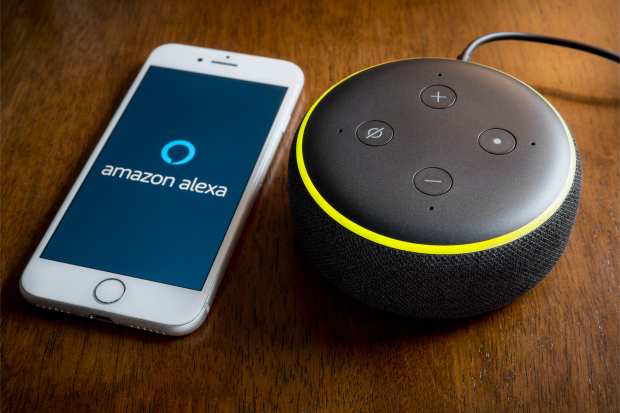Alexa Touts Screen To Boost Voice Commerce

In the drive to bring voice commerce to the mainstream, to move toward “speaking” the daily activities of buying what we need, as we need it, might there be room for a visual component, too?
To that end, Amazon seems to be angling toward the screen.
Consider a commercial that debuted this month, which may have already crossed your TVs or hand-held devices. Titled “Life Before Alexa” and set in Ancient Egypt, the spot shows a group of men standing around a mummy. Toilet paper rolls used to wrap a mummy come up empty.
The men add toilet paper to the list chiseled on a tablet by a scribe (Alexia) and then camel milk and moisturizer. The scribe walks off in a huff, we presume overloaded by the task of keeping this all together in one place.
“Thanks, guys, I’ll take it from here,” chimes in that familiar voice. It’s Alexa, of course, with a nod toward EchoShow, the smart displays being sold by the eCommerce giant.
The gist? Adding shopping lists to the mix offers a way to create an even stickier relationship between the end consumer and smart, connected devices such as Alexa. But there’s another wrinkle, too.
Our minds are finite receptacles for lists. Studies show that we can only remember about seven things off a list at any given time. Having a “cylinder” assistant such as the smart speakers rattling off items is helpful, but perhaps not as much as having a visual list. The Echo Show offerings also can allow users to scan barcodes of grocery items to add to those lists.
It’s an added dimension to Alexa device sales, which firms like RBC estimate can bring $10 billion to $11 billion to Amazon’s top line annually.
The pump is certainly primed to meld the shopping lists to voice-controlled commerce.
As we noted in this space in a recent How We Will Pay report, “voice is connected commerce’s killer app. Voice plus visual is a connected commerce game changer.”
Consider the fact that more than three in every 10 consumers own voice assistants, up from 1.4 in 10 three years ago.
They’re using the assistants more often to make purchases, too. About 9.6 percent of consumers, we found in the research, use voice speakers to buy things as of 2019, up from 7.7 percent just two years ago. Against a broader landscape, interest is there to use the devices in everyday commerce, too. With the specific use case of grocery shopping, the 7.5 percent of consumers surveyed said they’d used voice assistants to buy groceries, up from 3.9 percent the year before.
Moreover, interest in connected experiences that pair voice-recognition technology with visuals is highest among consumers who already own at least one type of voice-enabled device. Forty-five percent of consumers who own voice-enabled devices say they would be interested in using these connected commerce technologies. Drill down a bit and it is the “super” connected consumers, who own about 7.7 connected devices compared to 4.9 devices for the “average” consumer.
To borrow a theme from the EchoShow commercial … all of this goes to say: Anyone who doubts the power of connected commerce is living in de-Nile.
